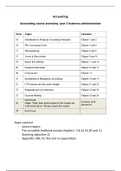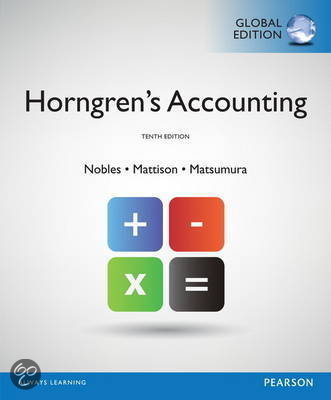Samenvatting
Summary accounting BA1
- Instelling
- Radboud Universiteit Nijmegen (RU)
Summary of all lectures on accounting in the first year of Business Administration on the Radboud University. Including a word list with the Dutch terms EN-NL.
[Meer zien]





